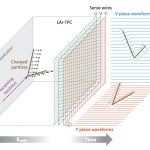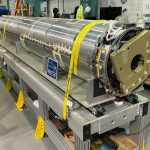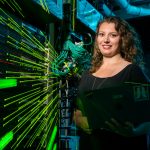Brookhaven National Laboratory
From Positively Naperville, May 24, 2021: A report on the April 7 Muon g-2 result announcement speculating that there must be new particles or forces that we have not yet discovered.
From Nature, May 5, 2021: The established theory of the standard model, and has passed a vast number of experimental tests with flying colors. But one such test — the determination of the magnetic moment of an elementary particle known as the muon — has resulted in a long-standing discrepancy between theory and experiment.
From U.S. News and World Report, April 24, 2021: A team of University of Kentucky professors were part of a large-scale physics experiment at Fermilab showing results that point to a potential gap in the Standard Model of physics.
The U.S. Department of Energy has given the U.S. High-Luminosity Large Hadron Collider Accelerator Upgrade Project approval to move full-speed-ahead in building and delivering components for the HL-LHC, specifically, cutting-edge magnets and accelerator cavities that will enable more rapid-fire collisions at the collider. The collider upgrades will allow physicists to study particles such as the Higgs boson in greater detail and reveal rare new physics phenomena. The U.S. collaborators on the project may now move into production mode.
From Inside Science, Nov. 12, 2020: A recent experiment has created a one-way quantum network between two labs, reaching a milestone on the path to creating a quantum internet. Fermilab Deputy Director Joe Lykken weighs in.
From Argonne National Laboratory, May 5, 2020: Using Argonne’s supercomputer Mira, researchers have come up with newly precise calculations aimed at understanding a key gap between physics theory and measurements by the Muon g-2 experiment
From WBUR’s Here & Now, Feb. 12, 2020: The United States will soon have its first new particle collider in decades. Earlier this year, the Department of Energy announced that Brookhaven National Laboratory in Upton, New York, will be home to the Electron-Ion Collider, which will investigate what’s inside two subatomic particles: protons and neutrons. DOE Undersecretary for Science Paul Dabbar mentions the Deep Underground Neutrino Experiment.
Kirsty Duffy, a Lederman fellow at Fermilab, says neutrinos are the most interesting particles in the universe. As a recipient of the Leona Woods Distinguished Postdoctoral Lectureship Award, she’ll have a chance to make her case in two talks she’ll deliver at the Brookhaven National Laboratory this November.



